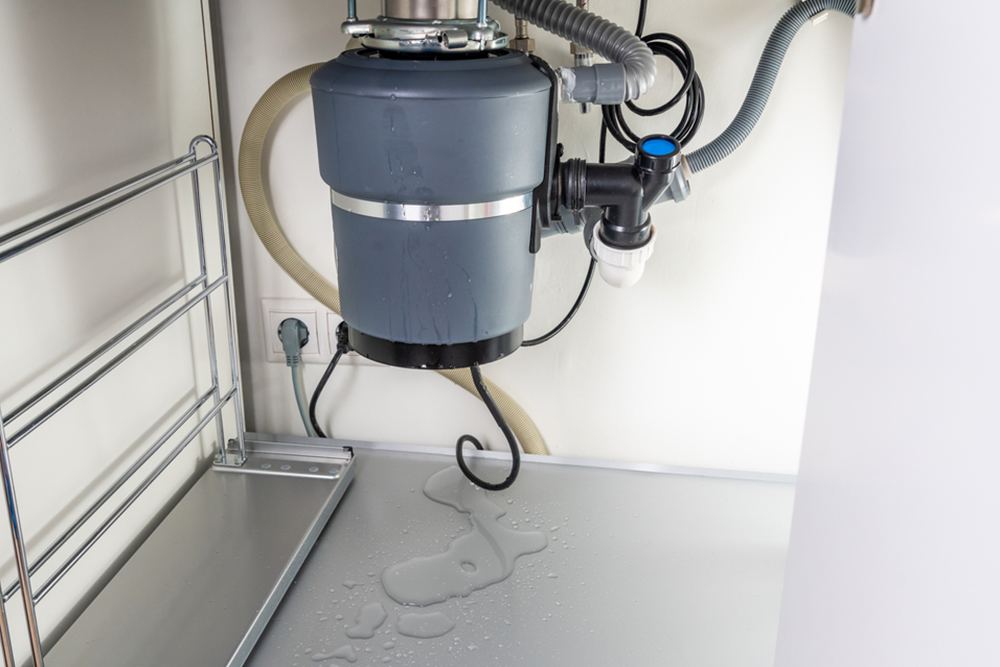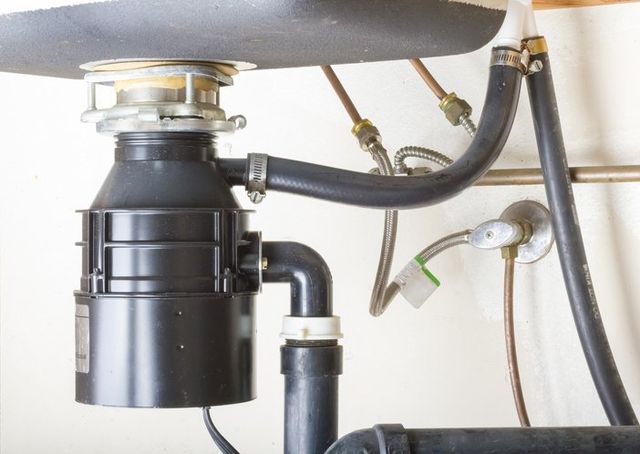Best Methods for Resolving a Leak in Your Garbage Disposal
Best Methods for Resolving a Leak in Your Garbage Disposal
Blog Article
Every person has got their unique perception on the subject of Why Is My Garbage Disposal Leaking From the Bottom?.

Waste disposal unit are crucial cooking area devices that help in throwing away food waste efficiently. Nevertheless, a dripping waste disposal unit can be an aggravating and unpleasant trouble to deal with. Thankfully, numerous leaks can be taken care of quickly with a couple of basic steps. In this short article, we will talk about how to fix a leaking waste disposal unit properly.
Intro
Waste disposal unit are set up under cooking area sinks and are made to shred food waste right into smaller items, permitting it to go through the plumbing system conveniently. While these gadgets are typically reliable, leaks can take place gradually due to damage, loose links, or damage to the device.
Typical Reasons For Leaks in Garbage Disposals
Worn Seals and Gaskets
Seals and gaskets play a vital role in avoiding water from dripping out of the garbage disposal. In time, these components can deteriorate, leading to leaks around the disposal system.
Loose Connections
The links between the waste disposal unit and the pipes system can end up being loosened in time, creating water to leakage out during operation.
Fractures or Openings in the Disposal Device
Physical damages to the waste disposal unit, such as cracks or holes in the housing, can likewise result in leaks.
Recognizing the Resource of the Leak
Before trying to repair a dripping waste disposal unit, it is necessary to identify the resource of the leakage. This can usually be done with aesthetic assessment or by performing basic tests.
Visual Inspection
Inspect the waste disposal unit system thoroughly for any type of indications of water leakage. Pay close attention to areas around seals, gaskets, and link factors.
Testing for Leakages
One way to examine for leakages is by running water with the disposal device and checking for any visible signs of leakage.
Tools and Materials Needed for Fixing a Leaking Waste Disposal Unit
Prior to starting the fixing procedure, gather the necessary tools and products, including a screwdriver, flexible wrench, plumbing technician's putty, substitute seals or gaskets, and epoxy or patching material for fixing fractures or openings.
Step-by-Step Overview to Dealing With a Dripping Waste Disposal Unit
Turn Off the Power
Before trying any kind of repair services, guarantee that the power to the waste disposal unit device is turned off to stop the danger of electric shock.
Find the Leakage
Recognize the precise area of the leakage and identify the cause.
Tighten Links
Use a wrench to tighten any loosened links between the disposal system and the plumbing system.
Change Seals or Gaskets
If the leakage results from used seals or gaskets, eliminate the old components and change them with new ones.
Patching Cracks or Openings
For splits or holes in the disposal system, usage epoxy or an appropriate patching product to secure the damaged area.
Testing the Waste Disposal Unit After Repair
Once the repair service is total, test the waste disposal unit by running water through it to make certain that the leakage has actually been solved.
Preventive Upkeep Tips to Prevent Future Leaks
To avoid future leakages, it is vital to carry out routine upkeep on your garbage disposal. This consists of maintaining it clean, staying clear of placing non-food things or tough objects down the disposal, and regularly looking for leaks or other issues.
Final thought
Finally, repairing a leaking garbage disposal is a relatively uncomplicated process that can be completed with standard tools and materials. By adhering to the steps outlined in this write-up and practicing preventative maintenance, you can maintain your garbage disposal in good working problem and avoid expensive repairs in the future.
HERE’S HOW TO FIX YOUR GARBAGE DISPOSAL
WHAT TO DO IF SOMETHING IS STUCK IN YOUR GARBAGE DISPOSAL
If the impeller won’t turn, there’s probably something stuck in the disposal. It could be a steak bone or peach pit, although plumbers report pulling all sorts of inappropriate objects out of disposals, such as bottle caps or aluminum foil. Make sure power to the disposal is off, and look inside to see if you can see the source of the jam.
Never stick your fingers in a disposal. Pull out anything you see with tongs or pliers.
If the disposal still won’t work, it may be time to call a plumber or consider buying a new disposal. GEM Plumbing & Heating is here for all of your garbage disposal needs.
WHAT TO DO IF YOUR GARBAGE DISPOSAL DRAIN IS CLOGGED
Take everything out from underneath your sink and put a bucket or other container under your disposal to catch any water that drains out. Disconnect your disposal from the power supply. If it’s plugged into a wall outlet, unplug it. If it’s hardwired into an electrical box, go to the electrical panel and turn off the breaker for the disposal. Pour ¼ cup of baking soda into the drain, followed by ½ cup of white vinegar. Give the solution a few minutes to fizz and do its work. Look into the disposal with a flashlight to see if you can see an object that might be causing the clog. If you see it, remove it using tongs or pliers. MORE TIPS ON DEALING WITH A CLOGGED GARBAGE DISPOSAL
Never use drain cleaner in a garbage disposal. It can damage the plastic parts inside the disposal. You can also be splashed with the caustic liquid while working to clear the clog. Beware! Never stick your fingers into a garbage disposal. Trust us — not a good idea. In many instances, your dishwasher drains through your garbage disposal. This allows the disposal to grind any large food particles that may be drained out of your dishwasher. There are some jurisdictions, however, where the plumbing code prohibits such a connection. WHAT TO DO WHEN YOUR DISHWASHER DRAINS THROUGH THE DISPOSAL
Run some water in the sink so your plunger has at least a ½-inch of water to create a seal and plunge vigorously up and down several times. You may need to repeat this several times. Run hot water down the drain to clear any residue that remains.

As a serious reader about Why Is , I thought sharing that short article was really useful. Sharing is caring. Helping others is fun. Thanks a bunch for your time. Visit us again soon.
Call Today Report this page